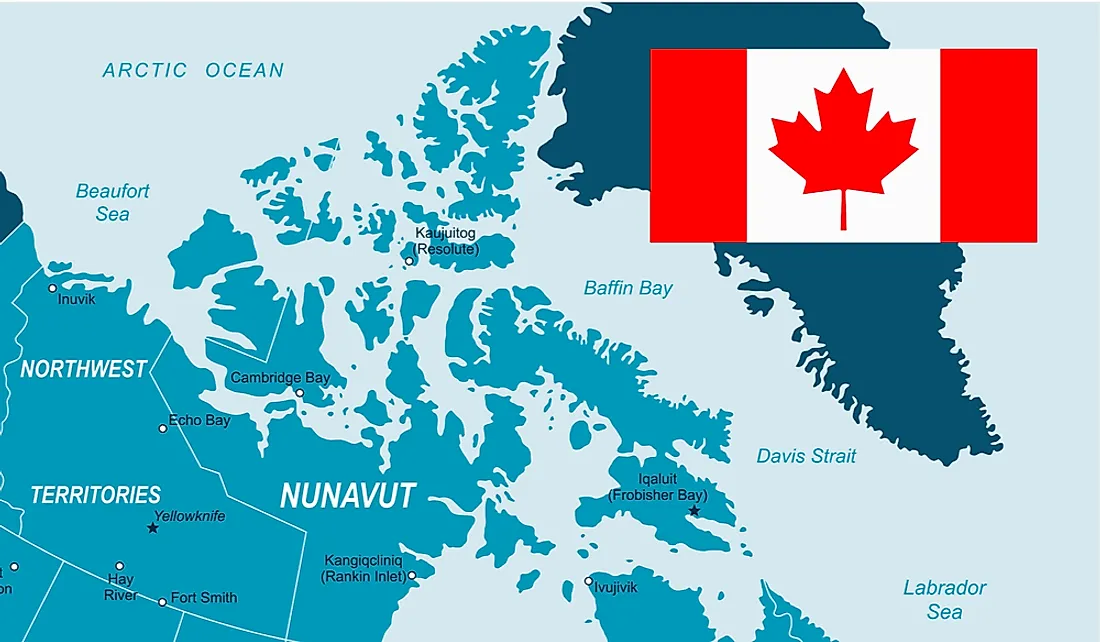Where Is The Canadian Arctic Archipelago?

The Canadian Arctic Archipelago, simply known as the Arctic Archipelago, is a group of islands on the north of mainland Canada. The archipelago is situated on the extreme north of North America and covers an area of approximately 550,000 square miles. It consists of 94 major islands and 36,469 minor islands on the Arctic Sea, mostly on the territory of Northern Canada. Apart from Greenland which is almost entirely covered by ice, the Canadian Arctic Archipelago is the largest High Arctic land by area in the world. 3 of the 15 largest islands in the world are part of the archipelago, including Baffin Island (position #5), Victoria Island (#8), and Ellesmere Island (#10).
Geography and Geology
The Canadian Arctic Archipelago extends longitudinally for approximately 1,500 miles and approximately 1,200 miles from the mainland to Cape Columbia which is the northernmost point on the Ellesmere Island. The archipelago is bordered to the west by the Beaufort Sea and the Arctic Ocean to the north. Greenland, Davis Strait, and Baffin Bay border it to the east and Hudson Bay and Canadian mainland to the south. The major islands of the archipelago including Baffin, Axel Heiberg, Ellesmere, and Devon are mountainous with their peaks exceeding 2,000 meters. The islands are separated from each other and the mainland by series of waterways that are collectively referred to as the Northwestern Passage. 94 of the 36,563 islands of the Canadian Arctic Archipelago are classified as major islands since they are larger than 50 square miles and cover a total area of approximately 540,000 square miles.
The geological variety of the Arctic Archipelago produces spectacular sceneries, comprising of rugged mountains, plains, and steep-sided fjords. The eastern islands of the archipelago contain the northern extension of the Canadian Shield. The Canadian Shield area consists of rich minerals deposits such as diamond and gold while deposits of natural gas and oil have been found in areas of sedimentary rocks. Coal is also found in abundance in this area.
Climate and Climate Change
The Arctic Archipelago is a truly polar environment. The night on the northern islands lasts 24 hours for 3-4 months during winter and days the same period during summer. In the Arctic Archipelago, the summer temperature may rise above the freezing point for 1-2 months. Annual precipitation is generally low, ranging from 100 to 400 millimeters. The cold climate is responsible for the development of permafrost which exceeds 550 meters in thickness in most places. Only a thin active layer of about one meter on the surface melts every summer. The Canadian Arctic Archipelago ex experiencing effects of climate warming more intensely than other lower-latitude parts of the world. The climate change has led to the reduced sea ice and the retreating and thinning of the glacier. The annual mean temperature in the Arctic is predicted to increase within the century. Precipitation and summer temperatures are also expected to increase.
Flora and Fauna
The flora of the Arctic Archipelago consists of sedges, dwarf shrubs, mosses, and grasses. There are approximately 270 species of vascular plants, 550 lichens, and 300 mosses. The plants are widespread and have a circumpolar distribution. There are about 20 species of land mammals on the archipelago. Some of these animals include Peary caribou, Arctic fox, Arctic hare, and Arctic wolf.











